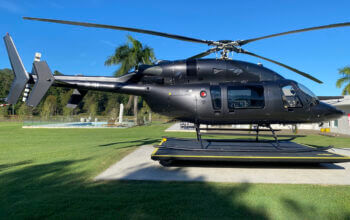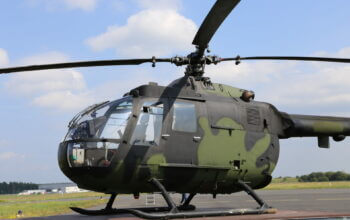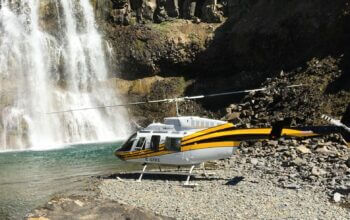If and when electric air taxis take over our cities, they’ll need vertiports — places to land, recharge, and embark and disembark passengers. Now, Volocopter and Skyports plan to show what those vertiports might look like by actually building one.

The companies announced on May 23 that they’re cooperating to build the first mobile “Volo-Port” for air taxis in Singapore, based on a design by Brandlab, Graft Architects, and Arup. Construction will be completed later this year to coincide with public flight trials of Volocopter’s eponymous multicopter.
Volocopter has been working with the Civil Aviation Authority of Singapore (CAAS) to establish the scope of the flight trials, which are intended to validate the ability of these eVTOL aircraft to operate in Singapore’s urban environment. According to Volocopter, its vehicles can carry two people over a distance slightly less than 30 kilometers (18 miles) — not practical for many of the missions envisioned by proponents of aeromobility, but very feasible for inner-city hops.

“Receiving the commercial license for air taxi aircraft is a question of time not possibility. We are thus focusing on shaping the necessary ecosystem around UAM [urban air mobility] including air traffic management, city regulation, and the take-off and landing infrastructure,” said Alex Zosel, Volocopter co-founder, in a press release accompanying the Volo-Port announcement.
According to Duncan Walker, managing director of Skyports, each individual Volo-Port is designed so that it can stand alone or connect to other ports in numerous formations, enabling rapid deployment and scalability. They will merge with their surroundings, allowing passengers and passers-by to see through the whole structure.
Linda Stannieder, co-founder and CEO of Brandlab, said the design is intended to link ground to air infrastructure in the smoothest way possible. “Mobility patterns in cities worldwide are changing rapidly — seamless transitions from one mode to another are crucial for transport efficiencies and changing passenger demands,” she stated.

According to Volocopter and Skyports, the Volo-Port prototype will enable real-life testing of the full customer journey to perfect the passenger experience, as well as allowing practical testing of ground operations and services, including battery swaps and charging, maintenance, safety, and security. It will also provide the opportunity for authorities and industry regulators to interact with the infrastructure and provide feedback before they are asked to approve the final design.
“Once regulation comes through on the aviation and city level — and this will be sooner than most think — we will be ready to take off,” said Zosel.








